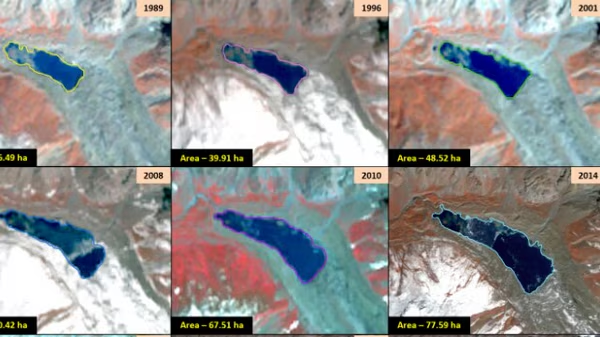By CHR News Desk | New Delhi
The Indian Space Research Organisation (ISRO) has unveiled a groundbreaking analysis, disclosing that glaciers throughout the Indian Himalayas, often referred to as the Third Pole due to their extensive ice cover, are rapidly melting, resulting in a substantial proliferation of glacial lakes.
According to ISRO, this retreat has led to the formation of new lakes and the enlargement of existing ones across the Himalayan region. These bodies of water, known as glacial lakes, serve as vital freshwater sources for rivers in the area but also present significant risks, including Glacial Lake Outburst Floods (GLOFs) that can wreak havoc on downstream communities.
The release highlighted the imminent danger posed by GLOFs, emphasizing their potential for sudden and severe flooding downstream, triggered by the release of large volumes of meltwater from glacial lakes due to the failure of natural dams, such as those composed of moraine or ice.
This revelation comes amidst consistent global research indicating unprecedented rates of glacier retreat and thinning since the eighteenth century Industrial Revolution.
Drawing on satellite imagery spanning from 1984 to 2023, ISRO’s analysis identified a staggering trend: out of 2,431 glacial lakes in the Indian Himalayas larger than 10 hectares identified during the 2016-17 satellite survey, 676 have expanded since 1984. Among these, 130 are situated within India, with 65 in the Indus River basin, 7 in the Ganga River basin, and 58 in the Brahmaputra River basin.
Further insights from the study revealed that 89% of these expanding lakes have more than doubled in size, with 10 lakes growing between 1.5 to 2 times, and 65 lakes expanding by 1.5 times their 1984 size.
The study also categorized the glacial lakes based on their formation process into four broad categories: Moraine-dammed, Ice-dammed, Erosion-dammed, and others. Of the 676 expanding lakes, the majority were Moraine-dammed (307), followed by Erosion (265), other (96), and Ice-dammed (8) glacial lakes.
Long-term observations further underscored the alarming trend, with the Ghepang Ghat glacial lake in the Indus River Basin witnessing a staggering 178% increase in size from 1989 to 2022. This concerning escalation equates to an annual growth rate of about 1.96 hectares per year.




